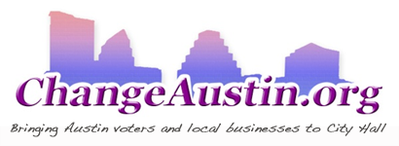The question on a lot of people’s minds right now is, “How low can they go?”
Lakes Travis and Buchanan, which supply much of our region’s water, are not natural lakes. They are reservoirs completed in the 1930s and ’40s. At full capacity, they hold 2 million acre-feet. (An acre-foot is enough water for annual needs of about three average Austin homes.)
Today, barring a major rainstorm, they are about to fall to their lowest levels since they were created. In September 1952, the lakes reached 621,000 acre-feet. On Sept. 10, they were at 659,000 acre-feet and dropping by about 1,400 acre-feet per day. Those worried about the water supply are in the perverse position of “praying for hurricanes.”
People living near the lakes, as well as cities facing water shortfalls, have become resentful of the rice farmers in the Colorado River’s lower basin area. It must be remembered that these farms have been cut off from their water supply for the past two years, the first time this has happened in the history of the lakes. It should also be remembered that federal funding for the lakes partially relied on the congressional support of the agrarian region downstream.
And while there is considerably more wealth per gallon generated by cities and industries compared to farms, this wealth will not be especially meaningful without food. In 2011, farmers paid about $28 per acre-foot for raw water to grow enough rice to feed about 1.2 million people annually on a calorie basis. Meanwhile, Austinites were willing to pay $1,600 per acre-foot for treated water to grow their “crop” of grass.
Believe it or not, it can get worse. If you total current use from Austin and other cities, future water contracts to provide for Austin’s growth, industrial use, evaporation from the lakes, and agricultural use, and apply it to current lake levels and drought conditions, the Highland Lakes would be below zero.
It is time to start planning in earnest for the future. There are no longer enough resources to provide for insatiable thirst of all who come here. We will either face huge increases in cost or need to create a water-efficient economy. Conservation of both water and money are key.
Five of the most promising strategies need center attention.
• Full implementation of 2007 conservation plan: In 2007, Austin created an aggressive conservation plan with 19 strategies to save water. Today, many of these ideas are still not implemented or have their effectiveness compromised. Some, such as mandatory plumbing fixtures retrofits, have stalled because they are controversial. Others, such as mandatory irrigation audits, have no method to measure effectiveness.
•Reclaimed water: The use of highly-treated wastewater for non-potable purposes such as irrigation and cooling towers has been employed to great effect in other cities. Austin has invested more than $50 million in its own “purple pipe” system. This has the potential to defray as much as 50 million gallons per day of peak capacity, the same as will be provided by the controversial Water Treatment Plant No. 4. However, Austin’s overly strict hook-up policies, lack of marketing staff, and lack of customer-side financing are constricting the use of this new system.
•Polyethylene utility pipe: Austin is using polyvinyl chloride water pipe as its material of choice. This is extremely toxic to manufacture and is more prone to leaks than polyethylene pipe, which is almost leak-proof and sometimes cheaper to install. Austin needs to replace more than 700 miles of old cast iron pipe that is at the end of its life, and it should be using the best materials.
•No new water projects: When Water Treatment Plant No. 4 comes online, this half-billion-dollar facility will raise Austin’s peak capacity to 335 million gallons per day. This past August, the city barely used half of this amount. This unneeded expenditure, and others like it, directly compete with water conservation funding.
•Relocate water conservation programs: Austin’s water conservation programs are administered by a utility whose main mission is to sell water. This is a blatant conflict of interest. The water conservation programs should be moved to a separate agency unshackled to the water utility.
Conservation is the best option we have right now, and the least expensive. It is past time to make the hard decisions necessary to make it work to its full potential.
Praying for hurricanes is not a drought-management policy.
Robbins is the editor of the Austin Environmental Directory. The new edition is online at environmentaldirectory.info.

 t, please do.
t, please do. 

